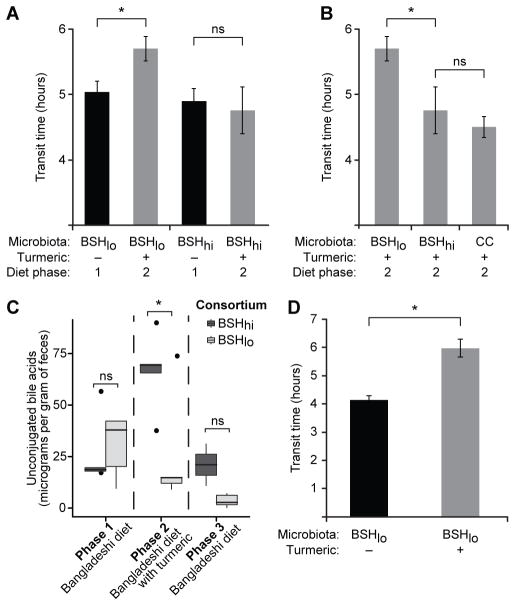Figure 5. An interaction between diet, bile acid metabolism, and gut motility revealed by colonizing germ-free mice with a BSHhi or BSHlo consortium and feeding them a representative Bangladeshi diet with or without turmeric.
(A) Turmeric consumption resulted in significantly slower motility in mice colonized with the BSHlo but not the BSHhi consortium. (B) While consuming the turmeric-supplemented Bangladeshi diet, BSHhi mice had transit times comparable to mice colonized with the complete 53 strain culture collection (“CC”) and faster motility (i.e., shorter transit times) than BSHlo mice (n=5 animals/microbiota). (C) Turmeric consumption is associated with a significant increase in total fecal unconjugated bile acid concentrations in gnotobiotic wild-type mice colonized with the BSHhi consortium but not the BSHlo consortium. (D) Transit times (mean ± s.e.m.) measured for two groups of gnotobiotic mice colonized with BSHlo consortium and fed the unsupplemented or turmeric-containing Bangladeshi diet. Measurements occurred at the end of the single (monotonous) 10-day diet experiment. Statistical significance was determined using a one-tailed Student’s t-test. *, p<0.05. See also Tables S4, S6, S7, S8.

